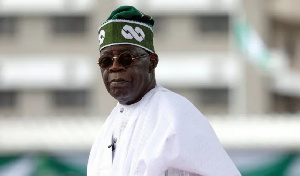Opinions of Saturday, 14 March 2020
Columnist: Alhassan Musah, author
Inflation dynamics in the economy: The everyday questions
Inflation has become one of the most politicised macroeconomic indices in developing and emerging economies including Ghana. Yet this highly significant economic indicator is seen by many ordinary folks only as a “Blackbox”, with many asking questions like what causes inflation at all, why is inflation declining when prices of many goods and services are rising, is inflation always bad for the economy, what are the implications of inflation on the general economy. Above all, how can inflation be controlled?
This piece is an attempt to briefly discuss some of the above questions that continue to baffle many a man on the street.
Inflation is primarily a rise in prices. A situation of a sustained increase in the general price level in an economy. One other commonly used description of inflation is a situation where there is more money in the system and fewer goods and services to purchase.
This inevitably causes price hikes. In many jurisdictions inflation is measured using the Consumer Price Index (CPI). CPI measures the percentage change in the price of a basket of goods and services consumed by households. Inflation then is an indicator of general cost of living in an economy.
Consumers frequently ask for example, “why is the government saying inflation is going down and yet prices of goods are increasing every day?” For instance, why did general prices in Ghana go up between 2017 and 2019 whilst year end inflation rate dropped from an average of 11.80% to 7.90% during the same period?
It must be noted that inflation measures the rate of change (mostly the rate of increase) in prices of goods and services. Hence, it would not be unexpected for prices of many goods and services to be increasing and yet the inflation rate is falling. The annual inflation average is an indication of how general price level changed relative to the preceding year.
To illustrate the point using the above diagram, suppose the average price of a basket of goods and services in December 2016 was Ghc100, with end of year inflation rate in 2017 and 2018 being 11.80% and 9.40% respectively, the same basket would cost Ghc118.00 in December 2017 and Ghc129.09 in December 2018 all things being equal.
Note that the Ghc18.00 increase in 2017 is higher than the Ghc11.09 increase in 2018 as inflation slows down.
The question of how inflation occurs has been a running debate in the field of economics. Whiles some believe inflation is a monetary phenomenon and so purely a central bank policy issue, others think it can also occur when prices of factors of production increase.
Economist have broadly agreed however, that Inflation is both an aggregate demand and aggregate supply phenomenon. This means that inflation is ultimately influenced by both monetary and fiscal policy decisions in an economy.
To illustrate the above paragraph, assume a simple economy where the population is 2 persons (Afua and Malik) with incomes of GHc50 each, and total goods and services (GDP) produced in the economy is 20kg of rice. Total income in the economy is Ghc50X2=GHc100.
The price per kg of rice will then be GHc100/20kg = GHc5 per kilo. Now, if for some reason Malik finds a money printing machine and suddenly prints another GHc100 for himself, the combined income would now be GHc200. With the quantity of rice remaining unchanged at least in the shortest possible time, the price of rice would now be GHc200/20kg = GHc10.
This means Malik can afford 15kg with his GHc150 whilst Afua can only buy 5kg with her GHc50. Prices have just gone up and the value of money has dropped. If on the other hand, the combined income remained GHc100 and for some reason the economy can only produce 10kg of rice, the price of rice would be GHc10 per kg.
The above illustrates how increased money supply can stimulate aggregate demand and trigger higher prices, or a reduction in aggregate supply, or a combination of both, can cause higher prices in the economy, which ultimately leads to inflation. This is more so in developing economies particularly Africa where lose monetary policy and low productivity are commonplace.
It should be noted that money supply is not only limited to cash circulation. It includes demand, time, saving, and foreign currency deposits of residents etc. These sources are especially important in modern economies where more credit could be created through the fractional reserve banking system.
Other scenarios that may contribute to fanning inflationary pressures in an economy such as ours are taxes on consumers goods and services such as VAT, increase in prices of factors of production including wages, sudden disruption in sources of supply such as the coronavirus in China, and exchange rate depreciation ( this is typical of import dependent economies especially in Africa). These invariably get passed on to the final prices being paid. In these cases, a given income level would be worth less in terms of goods and services.
One important question worthy of discussion is whether inflation always emerges when more money is injected into the economy. The short answer is it depends on the circumstance of the economy. Modern economists have used varied ideas to explain the dynamics of instances where an increase in money supply does not necessarily translate into price inflation even in the short run.
One area of interest in this regard is the state of the economy in question. An economy with excess capacity in terms of factors of production may not experience higher inflation with an increase in money supply by the central bank since this could be matched by increase in supply of goods and services.
Increases in money supply tends to lead to inflation in many developing economies including Ghana, not because these economies are near full employment but largely due to production and infrastructural bottlenecks as well as lack of capital and technology to increase production and productivity to match the increased aggregate demand.
Again, an economy in recession with low consumer confidence may not necessarily experience higher inflation following an increase in money supply. A recent case in point is the relatively low inflation in the US economy following the massive increases in money supply (Quantitative easing) to boost economic activity after recession caused by the 2007/2008 financial crisis.
If most of the extra money went to buy financial assets (stocks and bonds) for example, as was estimated in the case of the US, rather than buying real goods and services, inflation may not rise. Rather, this would lead to financial asset price inflation eventually causing financial market bubbles and crashes.
Additionally, consumers expectations which are partly influenced by confidence in policy makers’ long-term ability to control inflation, could also affect the levels of inflation. Consumers would rush to spend rather than defer spending if they believed future inflation would be higher, putting further pressure on prices in the short term.
The implications of inflation on the general economy can be significant. The impact of inflation can either be positive or negative.
Without inflationary pressures, consumers are encouraged to save as opposed to spend. Income saved does not get injected back into the economy, leading to stifled production and growth. It is important to consider the economic impairment that could be caused by a significant decrease in consumer spending, particularly in a period of recovery.
For many consumption-driven economies in Africa for instance, the expectation of a moderate level of inflation is necessary for sustainable growth. However, what we find in these economies are usually higher than desired levels of inflation.
A stable to moderate pace of inflation can correlate with healthy economic progress and expansion. In addition to signalling growth, moderate inflation can encourage consumer spending activity. Consumer spending is incentivized by the idea that the purchasing power of today’s cedi or dollar is greater than that of tomorrow.
Increased spending theoretically leads to increased business revenues. This could potentially lead to increased salaries and wages as well as disposable income. Though simplified, this description portrays the “economic good” caused by the consumer’s anticipation of inflationary growth.
This concept is especially important in the context of an economic recovery. The Bank of Ghana’s current target inflation rate is 8%+/-2% because that is the estimated rate to achieve a healthy growth of the Ghanaian economy.
We are told that the target could be revised down soon. Central banks in more developed economies such as the US Fed and the Bank of England have much lower inflation target – around 2%.
Central bank monetary policy tools such as interest rates and money supply have often been deployed to rein in undesirable levels of inflation. For it to be sustained in the long run however, this must be complimented by fiscal policy adjustment particularly aimed at structural changes.
Entertainment










